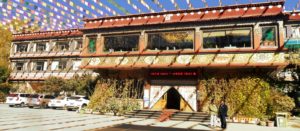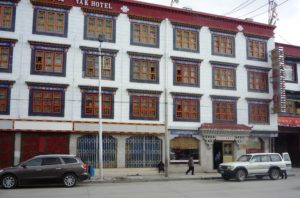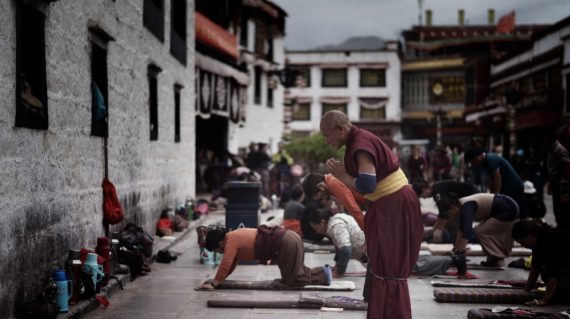
The Roof Of The World, Tibet
fromTibet adventure travel, tucked away in the mighty Himalayas, Tibet is a land of extraordinary natural beauty and rich cultural traditions. Among the most majestic peaks on earth and the vast, windswept plateau, the Tibetan people have nurtured a unique and deeply spiritual way of life for centuries. From the ancient monasteries and temples that dot the landscape to the enduring practice of Tibetan Buddhism, this extraordinary region has much to offer the curious traveler. However, the history of Tibet is also complex and often tragic, marked by political suppression and cultural struggle. Despite these challenges, the Tibetan spirit remains indomitable, and this mesmerizing land continues to beckon visitors from all corners of the globe.
The Tibetan landscape is breathtaking, with towering peaks, rolling hills, and vast grasslands providing a stunning backdrop for your journey. The region is also home to several natural wonders, including the Qinghai-Tibet Plateau, which offers endless opportunities for hiking, trekking, and other outdoor activities.
In addition to its natural beauty, Tibet is also home to a rich cultural heritage. The region has a unique culture that has been shaped by its history, religion, and geographic isolation. Tibetan Buddhism is integral to this culture and is reflected in the region’s many monasteries, temples, and other religious sites. These sites offer a glimpse into the spiritual life of the Tibetan people and are a must-see for anyone interested in Buddhism or Eastern philosophy.
Whether you are interested in its natural beauty, cultural heritage, or political history, there is something for everyone in this unique and fascinating region. For more information about Tibet adventure travel, check out our detailed itinerary or visit Tibet Travel for additional resources.
-
Reviews 0 Reviews0/5
-
Vacation Style Holiday Type
-
Activity Level Challenging
-
Group Size Small Group
Highlights
- Crossing the border from Nepal into Tibet and entering the Tibetan Plateau
- Rejoice in the beauty of Mount Everest from the Everest Base Camp.
- Exploring the Tibetan capital of Lhasa and visiting landmarks such as the Potala Palace and Jokhang Temple
- Visiting other Tibetan cities and towns such as Shegar and Gyantse
- Experiencing Tibetan culture and Buddhism at monasteries and temples
Why Travel To Tibet With Elite Explorer?
When you travel with Elite Explorer, you can be assured that you will not simply be a spectator, passively observing the wonders of the world. Rather, you will be an active participant in the vibrant stories of the places you visit. We are committed to helping you feel more deeply connected to the places you go, whether it be the bustling streets of Kathmandu or the holy monasteries of Tibet. We strive to go beyond the surface level of a destination, delving into its history, culture, and people to truly bring it to life for you.
With us, your journey will be more than just a vacation – it will be a transformative experience that allows you to feel more fully alive and connected to the world around you. As a group of seasoned travelers and passionate storytellers, we have a wealth of knowledge and experience that we are eager to share with you. Our goal is to make your trip a truly memorable and meaningful one, and we are dedicated to going above and beyond to ensure that you have the best possible experience. Whether it be through engaging and enlightening conversations, cultural activities, and workshops, or simply by taking the time to listen to your interests and tailor your itinerary to your needs, we are committed to making your tour a personalized and enriching one.
So join us on a journey that will not only showcase the breathtaking beauty of the Himalayas and the Tibetan Plateau but will also allow you to connect more deeply with the stories and people of these great regions. Come with us on this tour that goes beyond the ordinary and into the extraordinary.
- Journey from Kathmandu to Rasuwagadi and Kerung (Nepal-Tibet Border) in a comfortable Jeep, driven by a highly experienced driver.
- Tibet tour starting from Kerung in a private van.
- Twin-sharing accommodation with breakfast as per the itinerary.
- English-speaking Tibetan guide for the duration of the trip.
- Entry fees for all mentioned sites.
- Tibet Travel Permit included.
- A portable oxygen cylinder is provided in the vehicle.
- Complimentary bottle of water per person, every day.
- Expenses incurred during unforeseen circumstances such as landslides, road blockades, snowfalls, political unrest, delayed arrival, sickness, etc
- Airfare for international departures from Lhasa.
- Lunch and dinner at a hotel or restaurant
- Personal expenses including hot or cold beverages
- Gratuity to staff
- Services not mentioned herein
- Day 1 Kathmadu- Drive to Kerung approx 8 hours
- Day 2 Kerung- Drive to Shegar for approx 6 hours at the elevation of 4350 meters
- Day 3 Shegar (Tingri)-Drive to Rongbuk at 4980 m, visit Rongbuk Monastery & EBC at 5200 m then drive back to Shegar
- Day 4 Shegar- Drive to Shigatse, visit Tashilimphu Monastery & Local Market at 3900 m
- Day 5 Shigatse- Drive to Gyantse visit Khumbum Stupa and Pelkhor Chorten then drive to Lhasa via Yamdrok Lake at 3600 m
- Day 6 Visit Potala Palace, Jokhang Temple & Barkhor Market and 3600 m
- Day 7 Visit Drepung Monastery & Sera Monastery: 3600 m
- Day 8 Lhasa- Departure



Can I customize my tour?
Yes, you can.
Can I make changes to the itinerary when I am in Tibet?
Unfortunately, you are not allowed to make any changes to the itinerary when you are in Tibet. The Tibetan permit is issued based on the itinerary and clearly states the places, entry, and exit of your visit.
How do I enter Tibet from Nepal?
There are two ways to enter Tibet from Nepal. You can either drive in from the Nepal-Tibet border at Kerung, which is one of the best ways for acclimatization as we drive to Lhasa. The second option is to take a flight to Lhasa.
Is it safe to fly into Lhasa directly? Do I have to worry about altitude sickness?
Yes, it is safe to fly into Lhasa directly. However, some people may experience altitude sickness due to the significant altitude variation from 1300 meters in Kathmandu to 3600 meters in Lhasa. To prevent sickness, we take necessary precautions and advise our clients not to consume alcoholic beverages a few days before their flight or drive and to drink plenty of water. Additionally, we provide Acetazolamide (Diamox) 24 hours prior to your travel and throughout the trip. It is important to consult your doctor before taking such medication. Furthermore, we carry handy oxygen cylinders throughout the trip to mitigate altitude sickness.
How is the weather in Tibet?
Due to the country’s expansive terrain at high elevations, the climate tends to be quite unpredictable. Most of the time, it is cold, with Lhasa and its surroundings experiencing cool and bright days. However, evenings, nights, and mornings can be quite chilly, so it is advisable to bring warm clothing.
When is the best time to travel to Lhasa?
The most ideal time to travel is from August to September, although April to November is also a good period to visit.
Does Tibet have its own currency?
No, the unit of currency is the Chinese Yuan. All foreign currencies can be exchanged at banks, and you can also exchange some in Kathmandu.
Are there ATMs in Tibet?
Yes, ATMs are easily available in major towns like Lhasa and Shigatse. However, they may be more difficult to find in smaller towns.
Are specific nationalities barred from obtaining a visa to Tibet?
Not really. If you are not involved in politics and remain a tourist who stays with their tour, you will not encounter any issues.
How about internet facilities?
Cities like Lhasa, Shigatse, and Gyantse have access to the Internet. Moreover, hotels also provide internet facilities.



 Some Photos
Some Photos



